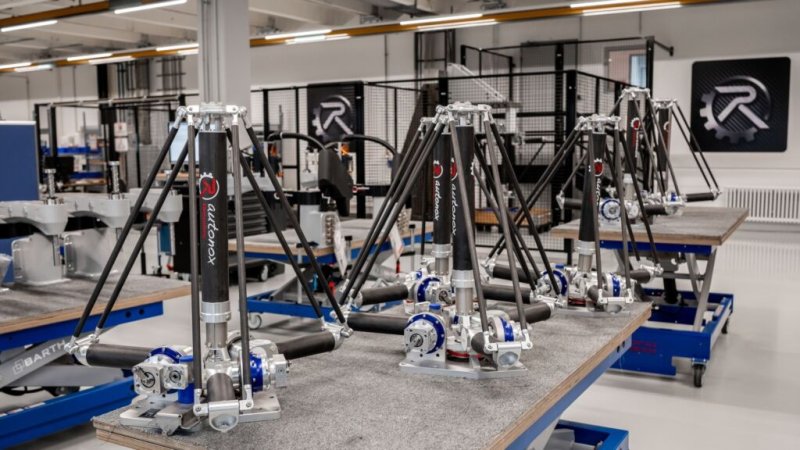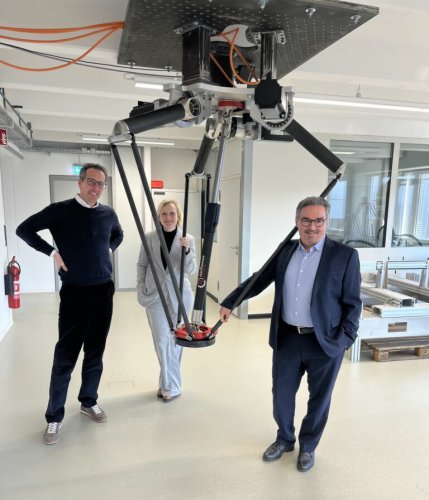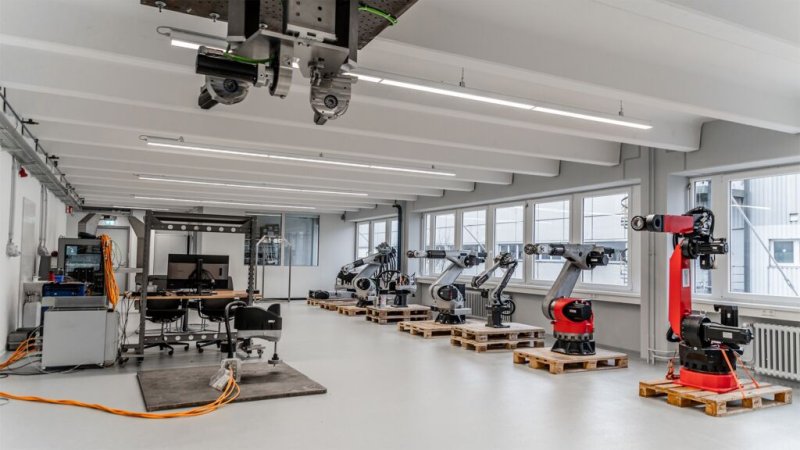As in industry in general, the signs in robotics are pointing towards greater flexibility and openness. But in this market segment in particular, buying the kinematics independently of the controller was a no-go for a long time. autonox is breaking down this dogma with separate robot mechanisms and its success proves how the times are changing.
The most important thing up front: ‘We build robot mechanisms, but we don't see ourselves as a robot manufacturer,’ says Elisabeth Schärtl, emphasising autonox's self-image. The person responsible for the LINKED Robotics partner programme also emphasises: ‘Our mechanics can be driven by any controller that has the necessary algorithms - which is actually common practice today.’ The company is now very successful with this approach. Around 1,500 mechanics were delivered last year. While the original focus was only on DELTA kinematics, the autonox portfolio has also included Articulated arm and sCara mechanics since 2022.


Specially customized mechanics
In total, the company has over 330 different mechanics for customers to choose from in the e-catalogue. ‘As we have almost 20 years of experience and our solutions are highly standardised, we offer many mechanics that are precisely tailored to specific applications or industries,’ explains CEO Hartmut Ilch. ‘Traditional robot manufacturers always require a critical purchase quantity for a model to be profitable.’ autonox, on the other hand, is flexible enough not only to manage the constantly growing portfolio, but also to produce on demand. ‘We can produce 50 different mechanics in one week and 50 of the same type the next week.’
The range is made up of four product areas: The range starts with so-called DuoPod mechanics, which are designed for pick & place along a defined straight line. This is followed by the classic DELTA mechanics for payloads of up to 50kg and working ranges of up to 2,000mm. Categories three and four are made up of the relatively new articulated arm mechanics and sCaras. A number of USPs are emphasised within the portfolio. Deltas, for example, use high-quality and robust roller bearings as standard. ‘Compared to typical plain bearing or spring technology, this enables higher loads, greater rigidity and more precision,’ Elisabeth Schärtl continues. Other special features include an integrated media supply, a coaxial telescopic drive shaft, double Z-stroke and integrated tool changers. For the articulated arm mechanisms, users can request secondary encoders or stiffened versions for CNC robotics, for example. Hygienic design variants are also available.
Fully integrated robotics
The customer can specify virtually without restriction which controller they want to use in their application. autonox then provides the appropriate interfaces and adapters in addition to the mechanics. ‘In turn, our customers order the controllers and drives themselves from partners,’ says Elisabeth Schärtl. What at first sounds like more work and expense in practice forms the basis for fully machine-integrated robotics. This approach has always been widespread in the packaging industry, where autonox has its origins. There is now also great interest from many other branches of industry. This is because standardisation on the control side brings many advantages - from commissioning to servicing. The system becomes leaner and interfaces become superfluous. Fewer components and less wiring reduce costs, effort and sources of error. Accordingly, this approach is increasingly being specified by end customers.
‘A rethink is taking place in the industry,’ Hartmut Ilch is certain. ‘Why use proprietary robot controllers in a system that otherwise runs with one type of controller throughout?’ This approach is becoming increasingly important because the demands on robot control are growing. "Many users with their own expertise cannot intervene as deeply as they would like in the control or path planning of classic robots. On the other hand, there are no limitations in terms of industrial controllers. The user generally has a free hand here."

‘In addition to the increasing number of OEMs for whom autonox manufactures in series, there are many customers from the special machine construction sector who are still relatively new to the topic of robotics,’ adds Elisabeth Schärtl. ‘That's why we work very closely with our control partners.’ In the Application Centre at the company's headquarters in Willstätt, customers can put autonox's mechanical systems through their paces with the desired controller according to their requirements - from Siemens, Rexroth and Beckhoff to Rockwell, Keba, Mitsubishi Electric, Yaskawa and Omron.
Partner platform LINKED Robotics
To make things even easier for customers, autonox is already in the middle of the next step: the development of a partner platform that, in addition to control technology, also provides access to suitable power electronics, motor variants or other components such as linear axes, energy supply systems or EOAT. ‘With LINKED Robotics, our customers know which components fit which mechanics with just one click,’ continues Elisabeth Schärtl. "We provide all the necessary information and the direct link. However, our customers have to buy directly from our partners." In future, the platform will also list software and service providers as well as system partners and integrators.
‘Today, machine and system manufacturers want to combine components as freely as possible - instead of installing part A, which is necessarily tied to part B,’ states Hartmut Ilch. ‘The strategy of established robot manufacturers of selling ready-made machines consisting of mechanics, control systems, motors, controllers, power supply and software runs counter to this desire for flexibility.’ This is why autonox's approach is so well received. "Until now, our business model was considered a niche. However, control-agnostic robotics is gaining so much momentum that we will probably no longer be able to meet demand on our own in a few years' time. So the niche thing will be a thing of the past."